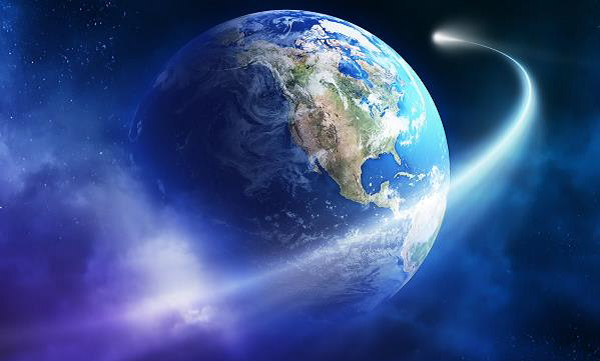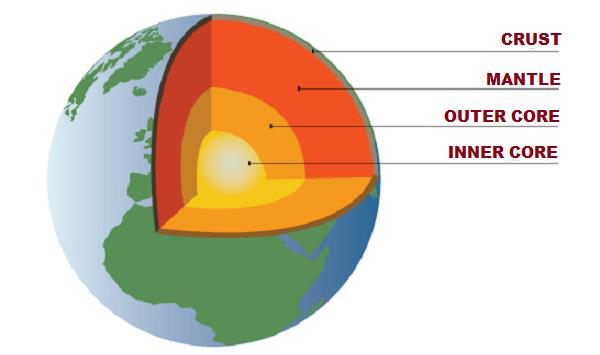- Total surface area of the Earth is 510,100,500 sq. km, out of which −
- The total land area is 148,950,800 sq. km (29.08% of total area) and
- The total water area is 361,149,700 sq. km (70.92%).
- Diameter of the Earth at Equator is 12,755 km, at the poles 12,712 km, and mean diameter is 12,734 km.

- Circumference of the Earth at Equator is 40,075 km and at the poles 40,024 km.
- Equatorial radius of the Earth is 6,377 km.
- The total mass of the Earth is 5.98 x 1024 kg.
- Approximate age of the Earth is 4,500 million years.
- The mean velocity of the Earth in its orbit (around the Sun) is 107,218 km/h.
- The most abundant elements of the Earth are
- Iron (about 32.5%),
- Oxygen (29.8%),
- Silicon (15.6%), and
- Magnesium (13.9%)
Structure of Earth
- The Earth is structured in three layers namely −
- Crust,
- Mantle, and
- Core – Further classified as outer core (fluid layer) and inner core (solid layer).

- The Crust is the uppermost layer of the Earth, largely composed of rocks. Its thickness ranges from 5 km to 60 km and density ranges from 2.7 to 3.
- The Crust shares about 1 percent of Earth’s volume.
- The Crust is categorized as ‘Continental Crust’ and ‘Oceanic Crust.’
- The thickness of Continental Crust ranges from 30 km to 50 km. It is largely composed by granites, which density (i.e. 2.7) is lesser than the Oceanic Crust.
- The thickness of Oceanic Crust ranges from 5 km to 10 km and it is composed primarily of basalt, diabase, and gabbro.
- The density of Oceanic Crust is 3.0.
- The most abundant element of Crust is Oxygen (46.6%) followed by Silicon (27.7%) and Aluminum (8.1%).
- The Crust is also known as ‘Sial’ (i.e. Silicon and Aluminum)
- The boundary between the Crust and the Mantle is known as the “Mohorovičić Discontinuity.”
- The Mantle is located between the Crust and the (Outer) Core, which thickness is about 2885 km.
- The Mantle shares about 83% of the Earth’s volume and about 65% of the mass.
- The density of Mantle is about 3.4 g/cm3.
- The upper layer of Mantle is known as ‘Asthenosphere.’
- The Crust and the upper part of Mantle collectively known as ‘Lithosphere.’
- The Core is mostly composed of iron and nickel; therefore, it is also known as ‘Nife’ (i.e. Nickel and Ferrous).
- The Core shares about 16% of Earth’s total volume and 30% of the mass.
- The thickness of the Core is about 3,400 km from the Mantle (likewise, the total depth from the Surface of the Earth is 6,300 km).
- Core is categorized as outer core (which is in molten state) and inner core (which is in solid state).
- Density of the inner core is about 13 g/cm3.


 Users Today : 371
Users Today : 371 Total views : 468131
Total views : 468131